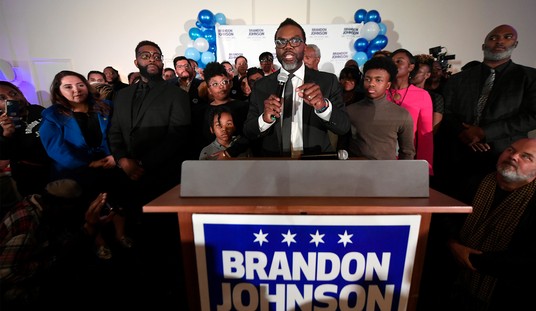Mary Katherine broke the news last night about the Fox debate rules, and there’s more than a little to be concerned about, both with that debate and the others on the agenda which are still in development. But to get one bit of housekeeping out of the way first, I spoke to someone at Fox last night night and it is possible (though absolutely not definite) that there could be more than ten people at their debate. The only way that happens is if there are two or more people tied up dead even in the polls. Still, that’s a “maybe” as I said, and they are still hammering out the details.
As to the fine points concerning what to do about the burgeoning field of Republican contenders when it comes time for them to make their pitch to the primary voters, I’ve been looking at some of the concerns being raised and possible solutions which have been proposed. There’s too much to excerpt usefully here, but for a bit of background you might take a look at Jim Geraghty’s thoughts at NRO, (he has more in the Morning Jolt) as well as what Ace had to say on the subject.
First of all, this is a problem. And it’s a big one which seems to lack any clear, satisfying resolution. But unlike peace in the Middle East, Islamic terrorist activity or the vexing choice between the McRib and the cronut burger, this one can’t simply be ignored in the hopes that it will settle itself. The stakes are just too high.
Let me first summarize the four main challenges involved and the problems with some of the proposed solutions I’ve seen so far which arise from having anywhere from fifteen to twenty or more declared Republican candidates.
1. If we jam them all on one stage for a single debate and limit it to the length we’re used to, it’s going to wind up giving them all roughly five minutes total to spit out some useless talking points with no in-depth examination of their plans and positions.
2. If, in scenario number 1, we give them all a fair amount of time, the event will run longer than a marathon showing of The Stand. The attention spans of even the most diehard political junkies will be tested to their limits and the low information voters who can barely be bothered to get involved under normal circumstances will long since have switched back over to Sports Center.
3. If we limit participants to the top “X” number of contestants as based on national polling, we wipe out the candidates without the money, name recognition and previous earned media to have penetrated the consciousness of the aforementioned low information voters who are answering the phones in national polls during the off season. Also, as Mary Katherine pointed out, you wind up (were it done today) with Donald Trump on the stage, but Bobby Jindal, Rick Perry and Carly Fiorina sitting on the sidelines. Just think about that.
4. If we feature the “top ten” in the big debate, and then offer the rest of the field either “other time” on the network or a second debate the following night when everyone is burned out from the main event, we’ve effectively established a “kiddy table” for the less well heeled hopefuls.
This leaves us with a daunting task, but it might not be as hopeless as it seems. Taking a combination of things suggested by Jim and Ace (among others) there might be some sort of sports bracket analogy which could lead to a useful, if not perfect solution. The five hour debate with twenty people on the stage just looks like a non-starter, and giving none of them more than a few minutes would be a waste of everyone’s time, so I think we have to have two debates. How do we make that both palatable to the viewers and fair to the candidates? We could split the “top tier” people in the polls into two groups, as Ace suggested. Then take the middle and lower tiers and do the same so you have an even mix of the well known and the dark horses for each session. The names from each group could be pulled at random with the moderators drawing straws or pulling cards from a deck or whatever. It would be a fun spectacle in and of itself. (I considered suggesting that Wolf Blitzer arm wrestle Megyn Kelly to select the names, but that would probably be a bit unfair to Wolf.)
But we can improve further on this by spreading out the buffet a bit. If we do back to back nights, one of the events will draw less traffic. How about if each hosting organization is given two nights spaced a week apart? That gives the viewers time to recover and rebuild their interest and doesn’t offer as much of an unfair viewership advantage to either group.
And finally, though it would require some cooperation between Fox, Salem, CNN and anyone else taking part, have them agree to mix it up. The same people couldn’t be in the same groups each time. That way they all face off against each other sooner or later. You might argue that I’m doubling the number of debates after everyone finally agreed to cut them down a bit, but it’s actually not. Each candidate would still participate in the same number of debates, but the voters would have more time to get to know them.
Would that work? Thoughts, anyone? Bueller?








Join the conversation as a VIP Member